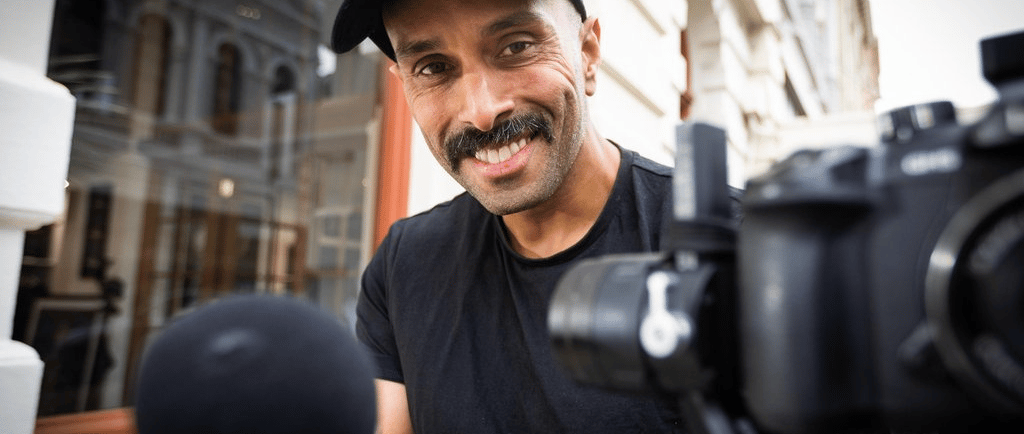The Rise of Street Interviews: When Viral Fame Outpaces Responsible Storytelling
As spontaneous street interviews flood social media feeds, experts are raising urgent questions about consent, privacy, and authenticity. This editorial explores how a seemingly harmless trend reveals deeper challenges in today’s digital storytelling culture and why responsible creators hold the key to restoring trust online.
DIGITAL CREATORS


The city streets have become modern stages, and every passerby a potential performer. What began as casual interactions between creators and strangers has evolved into one of the fastest-growing trends across social media—street interviews. Platforms are saturated with short, high-energy clips capturing unscripted conversations with the public, often designed to elicit laughter, shock, or emotional resonance. Yet behind the surge in viral content, a more complex narrative is emerging—one that questions how far creators should go for engagement and what ethical lines are quietly being crossed in the pursuit of digital relevance.
The appeal is undeniable. Street interviews offer immediacy, authenticity, and a rare sense of human connection in an era dominated by polished influencer content. For viewers, they promise unfiltered glimpses of real people and real opinions. For creators, they represent a cost-effective format that can generate rapid audience growth and brand partnerships. However, as the trend matures, experts in digital media and communication are expressing concern that the balance between creativity and responsibility is becoming increasingly fragile.
According to a 2025 report by the Australian Communications and Media Authority, the number of user-generated public interview videos has more than doubled in the past year across TikTok, Instagram, and YouTube Shorts. The accessibility of mobile technology has lowered the entry barrier for aspiring creators, but it has also blurred traditional media standards. Many local creators, often operating without formal training or editorial oversight, rely on instinct and social momentum rather than structured ethical guidelines. This gap has led to rising incidents of privacy complaints, online harassment, and reputational harm for those featured in viral clips without full awareness of how their words might be used.
Media psychologists suggest that this phenomenon is not merely a matter of content creation but a reflection of deeper cognitive biases. As Daniel Kahneman’s research on behavioral priming reveals, human perception is subtly shaped by exposure and context. Viewers repeatedly exposed to high-drama or emotionally charged interviews begin to expect similar intensity from every creator, pushing content producers to amplify reactions and edit selectively for impact. In the process, authenticity—the very quality that drew audiences in—risks being replaced by performative sensationalism.
This shift has real consequences. Several creators across Australia and beyond have faced public backlash after participants claimed their statements were misrepresented or taken out of context. Others have found themselves at the center of viral controversy, where public opinion morphs rapidly and reputational damage becomes irreversible. The speed of online amplification leaves little room for reflection or correction. What was once a harmless form of community engagement can quickly become an ethical minefield.
The implications extend beyond individuals. Local businesses, community leaders, and cultural advocates who engage with creators for publicity often underestimate the long-term risks associated with loosely managed digital collaborations. A single viral moment can shape perceptions of an entire neighborhood or brand identity. As more organizations recognize the persuasive power of street interviews, the need for transparent creative standards has become urgent.
There is, however, a path forward. Responsible storytelling begins with informed consent and context. Viewers respond most deeply to content that honors both creativity and integrity. Creators who prioritize respect, clear communication, and thoughtful editing are not only safeguarding their credibility but also elevating the industry itself. In markets like Western Australia, where digital creators are rapidly becoming key players in local media ecosystems, this commitment to ethical storytelling will determine who thrives in the long run.
At TMFS, we believe that influence carries inherent responsibility. The stories that move audiences are not those that exploit vulnerability but those that illuminate truth with empathy. For emerging creators, this moment offers a critical opportunity to define a new kind of digital leadership—one rooted in authenticity, trust, and community value. The real power of social media lies not in virality but in its ability to connect people meaningfully and responsibly.
As audiences grow more discerning, the future will favor those who balance artistic freedom with ethical clarity. Street interviews can continue to be a dynamic space for cultural expression and public dialogue, but only if creators approach their craft with purpose and respect. The question for every aspiring influencer and storyteller is no longer how to go viral, but how to create impact that endures.
The streets will always have stories to tell. It is up to today’s creators to ensure that those stories are told with fairness, context, and care. When the pursuit of attention aligns with the principles of integrity, social media can evolve from a stage of fleeting fame to a platform of lasting influence—and that is the kind of transformation worth striving for.
All rights belong to their respective owners. This article contains references and insights based on publicly available information and sources. We do not claim ownership over any third-party content mentioned.


